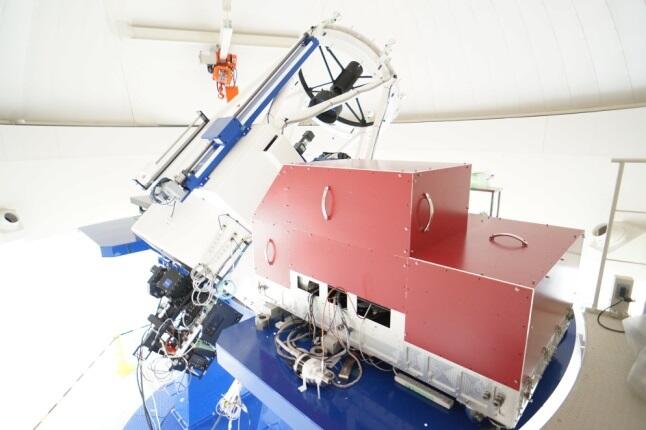A research group consisting of teams from Kyoto Sangyo University's Koyama Astronomical Observatory, the University of Tokyo and others, have obtained highly accurate spectra from two red giant stars: Arcturus (or α Boötes) in the Boötes constellation and μ Leo in the Leo constellation. The researchers compiled a list of absorption lines for various atoms that can be applied to stellar elemental composition analysis in the near-infrared wavelength range. When the elemental compositions of the two stars were estimated, the results were consistent with those reported in past literature.
Near-infrared wavelengths, in which the absorption lines of various atoms appear, provide a new tool that is widely used in stellar physics. Recent developments in high‐sensitivity infrared spectrometers have facilitated the study of stellar elemental composition, which previously was only possible using visible light. Due to these developments, preparation of a list of absorption lines for various atomic species in the infrared spectrum has become an important and urgent issue. "In order to accurately measure the elemental composition of a star, it is necessary to measure even weak atomic absorption lines, which are difficult to measure, with high accuracy. The confirmation analysis for an absorption line can be automated to some extent, but the influence of blending with other lines must be taken into consideration. To combat this issue, we conducted a careful investigation," said Hideyo Kawakita, Director of the Koyama Astronomical Observatory.

Credit: Kyoto Sangyo University
The two stars observed in this study are classified as K-type red giant stars. Their surface temperature is as low as 4300-4500 °C, and they are characterized by numerous absorption lines. These characteristics mean that they are suitable for preparing a list of atomic absorption lines. These two celestial bodies are also known to differ greatly in the amount of metal contained within them; so by comparing their spectra, the researchers succeeded in increasing the identification accuracy of the absorption lines.
As a result of the analysis, 191 absorption lines for six elements, namely magnesium, silicon, calcium, titanium, chromium, and nickel, were identified. In addition, these lines were combined with 107 absorption lines for Fe (identified in 2019) to create a list of 298 atomic absorption lines. Using this list, the researchers obtained the elemental composition for each star, which agreed with the values and error ranges published for previous visible light observations. "Infrared radiation is less susceptible to interstellar extinction than visible light," said Director Kawakita. "We would like to clarify the evolutionary processes of various elemental species in our galaxy by applying the measurement method established in this study to stars that are indicators of distance, such as cepheids near the center of the galaxy."
This article has been translated by JST with permission from The Science News Ltd.(https://sci-news.co.jp/). Unauthorized reproduction of the article and photographs is prohibited.




